Potatoes

Visit The DIRT A BLOG - Strike Fumigants
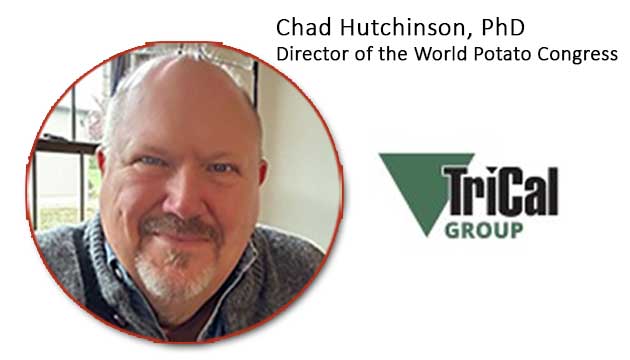
TriCal Group Becomes Diamond Sustaining Partner of the WPC
TriCal Group becomes the first Diamond Sustaining Partner of the World Potato Congress, marking a new era of collaboration ahead of WPC 2026 in Kenya. With deep expertise in soil health and sustainability, TriCal strengthens WPC’s global mission.

Sand, Wind and Common Scab: Lessons Learned From South Africa
During his recent trip to South Africa, Chad Hutchinson of met with growers and industry leaders, exchanging insights on soilborne disease management and sustainable farming. Chad continues to champion innovative approaches to Crop Protection and he’s sharing those insights.

Trical Employees Sit on Expert Panel on Black Dot in Potatoes
Black dot is spreading in potato fields — and farmers are right to be concerned. While not a new disease, black dot is becoming tougher to manage, stealing yield, blemishing tubers, and reducing marketability. That’s why Spud Smart brought together three experts for the Soil Under Siege panel.

Chloropicrin Fumigation and Biostimulants: A Promising Duo against Rhizoctonia Canker in Potatoes
A study from Frontiers in Soil Science has unveiled promising strategies to enhance potato yields and mitigate Rhizoctonia canker. Research from the IRDA and Université Laval in Québec chloropicrin soil fumigation as a biostimulant on potatoes.

Register for the Spudman Seminar
Join us for a webinar hosted by Spudman on July 22 at 2:00 PM EST: The Future Beneath Your Feet: Disease Control, ROI & Soil Science in Action. Learn how to manage soil-borne disease, improve ROI with Strike™, and build a resilient soil biome that supports better yields.

World Potato Congress Inc. Announce Chad Hutchinson as President
The World Potato Congress is pleased to welcome Chad Hutchinson of TriCal Group as Director. A long-time supporter of the World Potato Congress Inc. as Congress speaker and Platinum Partner, the WPC looks forward to working with Chad in this new capacity.

One Easy Change Can Double Soil’s “Good Guys”
We’ve always known Strike works. Season after season, growers tell us what they see in their fields: healthier plants, better root systems, and stronger yields. What’s happening beneath the surface? Not just in terms of pest control, but in the living biology of the soil itself?

Potato Planting Season is Here!
It is potato planting season in the Northwest!
Trident is currently assessing potato planting activities in this field. One of the most effective ways to manage soil-borne diseases is by using a trusted soil fumigant. Strike™ Chloropicrin fumigants deliver proven results.
Teleos Ag's New Potato-Specific Crop Page
Using TELONE™ by Teleos soil fumigant to prep the soil ahead of planting creates a zone of protection, allowing delicate roots to establish into healthy potatoes. Using TELONE™ in combination with chloropicrin also helps suppress many soilborne diseases that affect potatoes, including verticillium, common scab, rhizoctonia, fusarium, pythium, and more!

The Steady Growth of Strike in New Brunswick, Canada
New on The Dirt: A Blog by Dr. Chad Hutchinson - "The Steady Growth of Strike in New Brunswick, Canada". One grower, one trial, one success at a time—Strike is transforming fields across New Brunswick. “It’s like I’m growing a different crop.”

Attention Canadian Potato Growers
Level up your yield game with Strike YES! – the Strike Yield Enhancement Society
- Enter the Strike Yield Contest
- Get expert tips on potatoes, soil health & disease control
- Network with top growers and ag pros
- Unlock free webinars full of valuable insights

What Global Lessons Have we Learned About the Suppression of Black Dot?
One of the most underestimated culprits f crop loss Colletotrichum coccodes, or black dot, this pathogen thrives in stressed plants and plays a key role in the early die complex. But despite its impact, it’s often confused with or overshadowed by more familiar threats like verticillium wilt.

Stronger Plants, Better Yields, Fewer Resources
Stronger plants, better yields, fewer resources - and a lower carbon footprint. Potato growers face big sustainability goals, but with the right tools, we can get there—without sacrificing productivity. One tool that’s helping make this possible is Strike, driven by the chloropicrin.

How to Grow More with Less
Chad Hutchinson writes in Spudsmart that the potato industry embraces regenerative agriculture, sustainability is becoming more than just a goal: it’s an expectation. Processors and buyers are setting ambitious targets for fertilizer reduction, water use efficiency and soil health improvement.
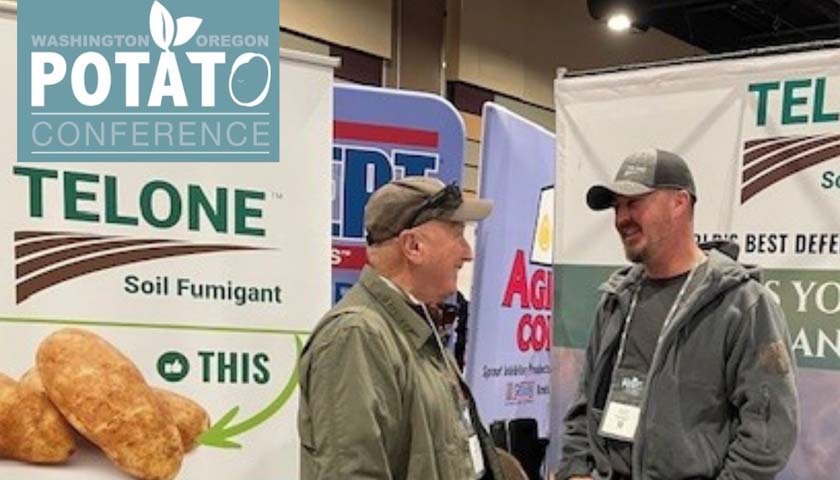
TELONE Specialists Robin Matson & Dusty Allen at the PNW Potato Conference
Our PNW TELONE™ Specialists Robin Matson and Dusty Allen are onsite at the WA/OR Potato Conference in Kennewick, WA. to show how TELONE™ can set you up for a successful potato season. Potato growers across the PNW ARE prepping the soil with TELONE™.

Potatoes - Common problems and our solutions.
Nematodes are a common pest in potato-growing areas, particularly in the Pacific Northwest. They are typically found in coarse-textured, sandy soils. Above ground symptoms can range from stunted growth and wilting under moisture stress, accompanied by distinct galls on potato tubers.

Potato Trial in Oregon focused on Tackling Pathogens
Trident Ag Products and Dr. Maxwell Handiseni are conducting a potato trial in Boardman, Oregon, focused on tackling pathogens like verticillium wilt and black dot in potatoes using chloropicrin, the active ingredient in Strike™ Soil Fumigant.

TriCal Group Supporters the World Potato Congress
TriCal Group have been longtime supporters of the World Potato Congress as Platinum Sustaining Partners. The largest annual potato industry conference and trade show had a chance to meet up with their team at the Potato Expo 2025 at the Orlando World Center Marriottin in Florida.

"Early Die" Potato Field trial at Rupert, Idaho
Trident Ag conducting a potato field trial at Rupert, Idaho to address the challenges of "early die" in potatoes. This trial focuses on utilizing Chloropicrin, the active ingredient in Strike™ Soil Fumigant, to effectively manage pathogens and promote healthier, more resilient crops.

Trident Ag is at the 2025 Potato Expo today in Orlando
Trident Ag is excited to be exhibiting at the 2025 Potato Expo today in Orlando, Florida! Stop by booth #1209 to meet our team and discuss innovative soil health solutions tailored for potato growers. Whether you're looking for ways to enhance your yields or optimize your soil, we’re here to help

Strike Targets Seed Growers with Focus on Black Dot
Black dot has historically been overlooked in potato seed production. Recent research shows that black dot, caused by the fungus Colletotrichum coccodes, working synergistically with Verticillium dahliae and root-lesion nematodes to weaken plants and reduce yields.

Trical Group at the 2025 Potato Expo in Orlando
The 2025 Potato Expo in Orlando, Florida is just 3 weeks away on January 9-10th. The TriCal Group Family of Companies will be there in booth #1209 ready to talk potatoes and soil health solutions with you. We hope to see you there.

Trident Ag at work in the Columbia Basin
Trident Ag's skilled technician is hard at work before sunrise, as seen in this stunning photo taken in the Columbia Basin, capturing the first light on the horizon. This raised bed, in-row fumigation with Strike™ is helping manage common scabs in a potato field, setting up the grower for a strong, healthy yield.

Trident fights Common Scab, Verticillium Wilt & Black Dot
Trident Ag. recently completed Strike™ fumigations in potato fields in Washington State to help control soil-borne diseases like Common Scab, Verticillium wilt, and Black Dot, ensuring healthier soil and better crop yields.
New York Potato Trial Harvesting
Potato Harvest Trial Harvest digs in New York. Looking at Russets, Whites, and Yellows with multiple rates of chloropicrin against non-treated. We look at suppressing verticillium wilt, nematodes, & common scab. This is a fresh market grower so skin quality and size profiles matter.

It’s ‘Harvest Earned, Not Harvest Given’
Our goal is to help you reach your growing potential. This is your livelihood, and you put in a lot of work. We see our role as being partners in farmers’ efforts. We can’t put in the hours in the tractor, but we can support soil health and effectively suppressing soil-borne pathogens.

Agricultural Science Done Right Resolves Social Science Intentions
Farmers are hungry for tangible ways to increase their sustainable efforts while maintaining economically viable yields. A lot of voices are calling for farming reform. However, feel good soundbites don’t feed the world. Potato producers are keen for real solutions.
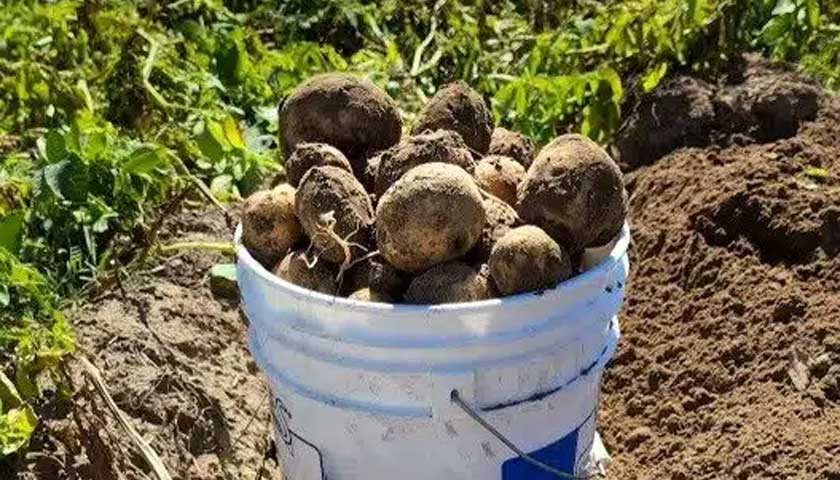
Do You Know (And Appreciate) the Hidden Heroes Beneath Our Feet?
One gram of soil can hold more than 50,000 species of microbes, all living, breathing, interacting and impacting our soil, land, and air. Swiss researcher Mark Anthony recently calculated that soil is home to 59% of Earth’s total life, the most biodiverse habitat on Earth!
E VA Red Potato Trial Soil Compaction Explanation
Red Potato Trial using different rates and applications methods of chloropicrin. In this video we explain the different soil compaction rates seen in different application methods.
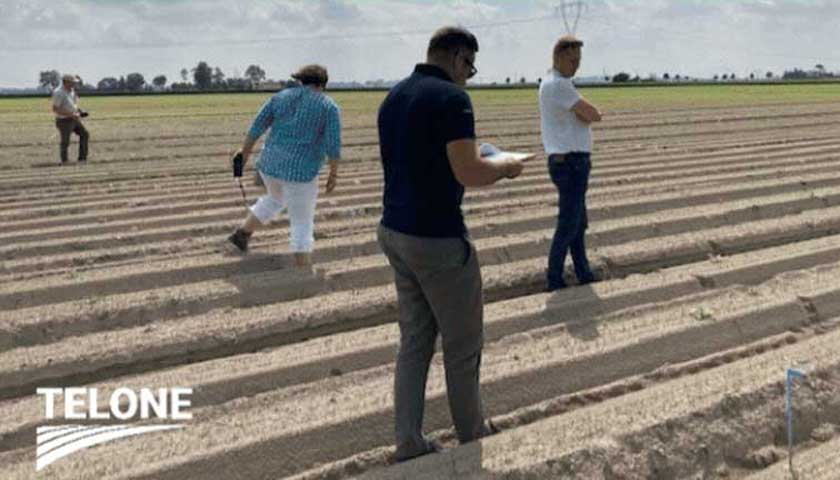
Poland Potato Trials
Teleos Ag is currently running many field trials around the world, and recently, our EMEA Sales Manager JB Gibbs and our Director of R&D Dr. Randy (RM) Huckaba were in Europe checking in on several sites, like the pictured site where our team is visiting several sites in Poland to see the progress of ongoing trials in potatoes and carrots.

Up to 68% of Potato Seed Could be Infected with Verticillium
68% of all seed potatoes sold in the Pacific Northwest are infected with verticillium. If you are a potato farmer who doesn't currently battle verticillium and you’re buying seed potatoes, you have a more than two in three chance that you’ll bring verticillium in.
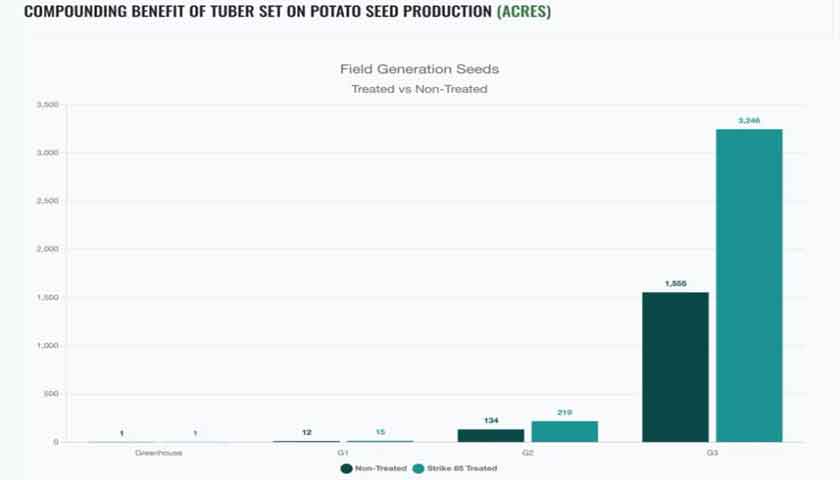
Are you a Potato Seed Farmer?
We conducted a two-year trial comparing potatoes grown in soil where disease was managed with Strike (chloropicrin). Based on what we observed in the field regarding tuber set increase, we developed a model that incorporated the benefit of set increase from Strike in a seed production system.

Soil Fumigation Changes the Game for Potato Seed Farm Economics
In today’s potato growing reality, a calculator is as critical to business success as good field management skills. We conducted a two-year trial comparing potatoes grown in soil where disease was managed with the soil fumigant Strike versus untreated potatoes.
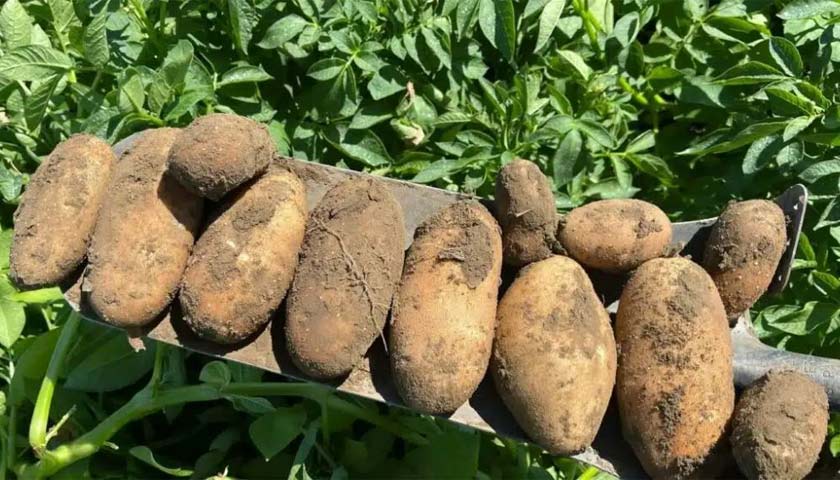
The Unintended Limits of Organic Farming
“Organic has its place, but it’s really important to define what organic is — and what it isn’t — especially in the context of sustainable ag. Organic has rules and limits, but it doesn’t necessarily always translate to maximum actual regenerative impact.”

TELONE™ USA R&D – Potato Field Trials 2024
Nematodes are a common pest in potato-growing areas, particularly in the Pacific Northwest. This blog post will cover common nematodes affecting potatoes in the Pacific Northwest, and recap a potato field trial that was done to demonstrate TELONE™ efficacy.

Finally: A New (Desperately Needed) Solution for Potato Wart?
Potato wart strikes fear in the bravest among us and at every level of the potato value chain. 36 fields have been identified as infected in three counties since 2000, leading to major trade disruptions, the destruction of hundreds of millions of kilograms of potatoes.

Field Trial Data that Inspired our Latest Campaign
“The farmer says he doesn’t want other growers to know the secret of his competitive advantage. I know he can’t help himself. I know he’s telling his neighbors what he can’t believe is happening in his fields.” What Is Quickly Becoming The Worst Kept Secret? Strike Soil Fumigant.

Short-term Thinking Costs Long-term Benefits
I convinced the director of agronomy for a large company that grows chipping potatoes to try soil fumigation with chloropicrin (sold as Strike). He appreciated the soil health and yield gains he achieved in year one, but he hasn’t been seeing the longer-term soil health gains.

Potatoes Following in Strawberries’ Footsteps, But Can Potatoes be as Nimble?
The parallels between where we are in the potato industry today compared to where California’s strawberry industry was in the 1950s are quite amazing. Strawberries are very sensitive to verticillium. Do I think chloropicrin is coming in potatoes? Absolutely.

Sustainability and profitability: two sides of one well-managed coin
Sustainability is a priorities in agriculture today. Recognizing that responsible management of resources is critical to ensuring agriculture can meet the world’s food, feed, and fiber needs today and tomorrow too, farmers are supportive of improving sustainability.

STRIKE is Fast Becoming the Potato Industry’s Worst-Kept Secret
Soil fumigants have suffered from an image problem, Strike is different – it’s a modern, highly-selective, soil health-promoting tool. There’s more and more awareness that Strike’s active ingredient, chloropicrin, suppresses all the major soil-borne potato diseases.

Managing the Good and the Bad of Soil Microorganisms
If you’ve farmed for several decades, you’ve seen firsthand the shift from broad spectrum to targeted pest management. Partially, the change has occurred because today’s available technologies are so vastly more precise than what our parents and grandparents used.
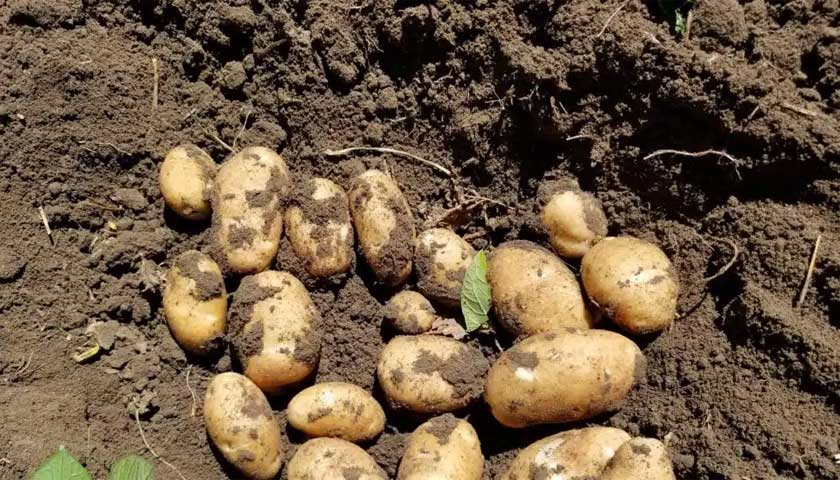
Incremental Yield Improvement Is Good, But It’s Not Where the Money Is
Soil health is the basis of the entire crop. Healthy soil is the most important step towards your crop’s yield potential. Plant into unhealthy soil and, no matter how much effort and investment you shovel into those acres, your crop won’t reach its potential.

“Am I Willing to Share? Heck No, It’s My Competitive Advantage”
"Ultimately, potato growers are all in competition with each other. Strike lets me grow more yield and better quality than the guys down the road or – since it’s a global market – in another state or country. The longer I can keep that edge to myself, the more money I make.”

Reduced Irrigation Yet More Yield and Better-quality Potatoes
One grower trialed soil fumigation with Strike (a chloropicrin-based product) on a handful of acres in 2020, mostly to better manage common scab and other soil borne diseases. Pleased with the results, he’s increased his treated acreage each year. Last fall, he fumigated several hundred acres.

Potato School Snapshot - Can Fumigation and Sustainability Align?
As an agronomist and potato scientist, I’m always fascinated to hear the latest research from potato experts around the world. That’s why the TriCal Group’s Potato School with its focus on grower education is one of my favorite events.

Why Paul is Guilt-free About Doubling his Yield with Soil Fumigation
Over the last couple articles, I’ve told you about Paul: a highly experienced, sustainability-focused Ontario potato producer who saw yield skyrocket when he started using chloropicrin (the active ingredient in Strike) as a soil fumigant.

As Promised Here’s How Paul Doubled His Yield
Last week we shared the first article in a 3-part series published in SpudSmart titled, “Ontario Potato Farmer Notches 100% Yield Increase”. This week we are sharing the second article in the 3-part series published in SpudSmart titled, “As Promised Here’s How Paul Doubled His Yield”.
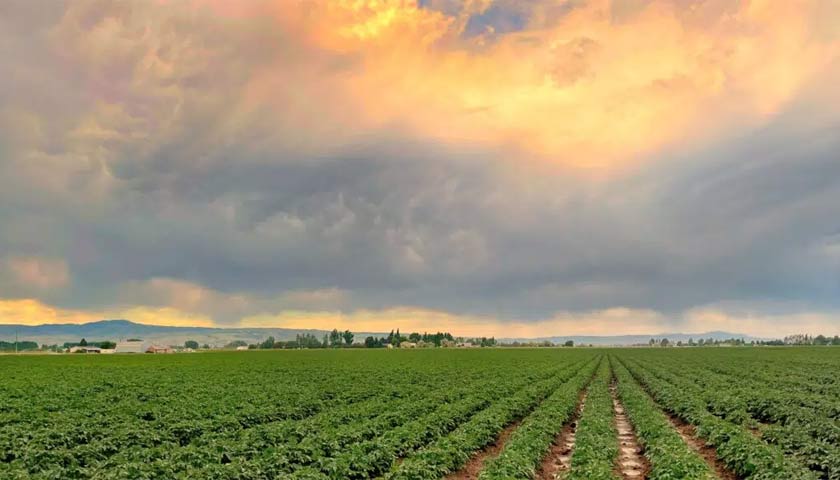
Ontario Potato Farmer Notches 100% Yield Increase
Four years ago at a farm show, I happened to cross paths with a long-time, forward-thinking potato grower from Ontario named Paul. He had the walk of a guy who wasn’t planning to stop. But four words on our signage literally caught him mid-stride: Strike supports soil health.

Are Lurking Pathogens Already Wreaking Havoc Below Ground
Farmers usually feel pretty hopeful about the potential of their crops at the start: the most common comment I hear in early summer is “This is going to be my year!” Those same farmers are often disappointed what they saw in June and July didn’t translate to yield.
How to Avoid “What Happened to my Crop?!” Disappointment
An interview with Chad Hutchinson by Ashley Robinson Seed World Group

Do You Miss the Money You Could Have Earned?
For a variety of agronomic, environmental, and management reasons, some potato producers choose not to apply soil fumigants to manage disease. The industry standard fumigant doesn’t allow for a winter cover crop to protect your soil and requires a great deal of management.

Disease Management vs. Sustainability — Does it Have to be a Choice?
The push for sustainability in agriculture: cover crops, reduced tillage, planting into more residue to reduce erosion, and choosing more sustainable chemical inputs are priorities for our whole industry. Is there a way to do that while controlling disease and staying profitable too?
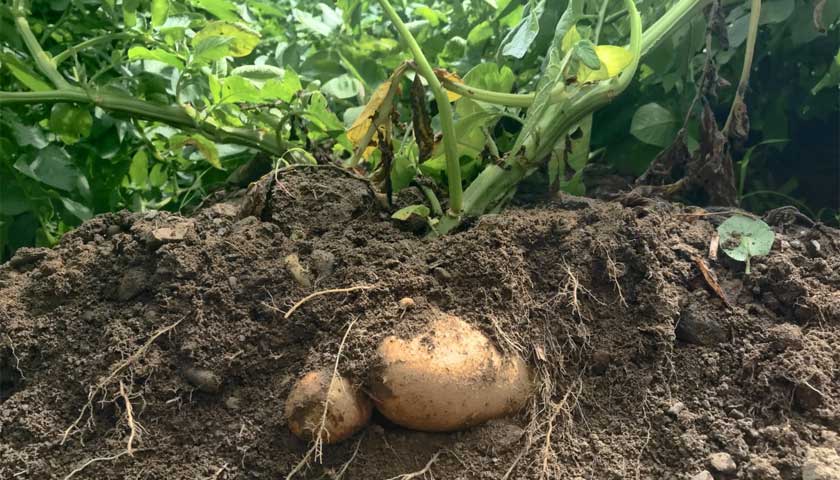
Soil Fumigation Treatment Zones — What You Don’t Know Could be Stealing from Your Investment
When growers apply Strike soil fumigant under their carefully managed field conditions, they get impressive results — control of rhizoctonia, black dot, common scab; boosted crop yield and improved sustainability.

Are You Throwing Money Away on Your Soil Fumigation?
You’ve seen the research study results that show soil fumigation with Strike can effectively subdue rhizoctonia, black dot, common scab, and early die complex. You’ve heard experts explain how chloropicrin can boost soil’s health and potato production’s sustainability.

What Patates Dolbec Learned About Soil Fumigation Could Make You Money
Scab steals a costly percentage of the potatoes produced at Patates Dolbec, one of Quebec’s largest farms. Patates Dolbec’s director of quality assurance and agronomy, coordinated a soil fumigation trial last year to see how Strike might impact his soil’s health and productivity.

Tackling Early Die Complex — a Sneak Peek from Potato School
If potato producers could snap their fingers to solve the most costly and frustrating production challenge they face, almost all would snap away early die complex. Early die can cost five to 30 per cent of yield. Yes, early die is difficult to manage. However, the more you know, the better you’ll be able to tackle it.

What’s Biting into Your Farm’s Economic and Environmental Sustainability?
Up to 58 per cent of all the food produced in Canada is lost or wasted each year. Think about that: nearly two of every three potatoes you grow get chucked. If you are like most farmers I know – strong and honorable people who are proud to be part of feeding the world – knowing that so much of your effort is wasted is nothing short of offensive.
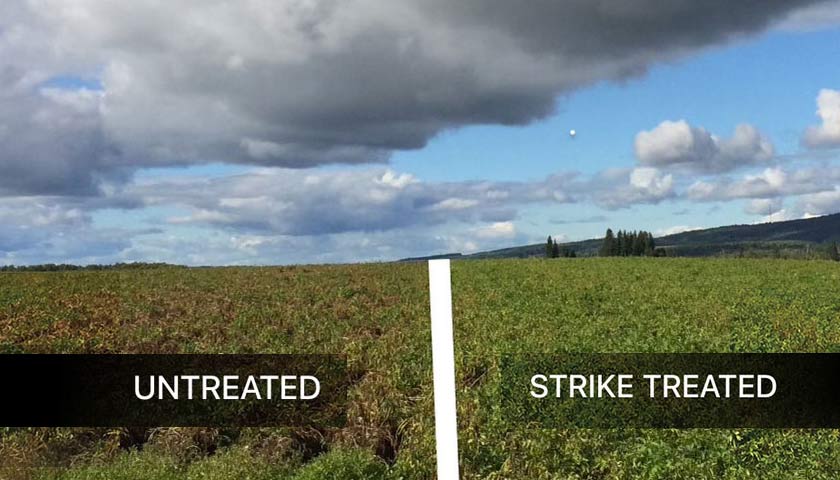
Tackle Verticillium Wilt and Take Back Control
Farmers have a lot on their minds: pests, frost, heat, commodity prices, too much rain, drought, labor, regulations and even more. To succeed at farming, a thousand things have to go right. Farming is stressful on its own. Add in supply chain issues and you are left with tough decisions regarding the best way to move forward for the success of your farming operation. Don’t panic, we’ve got you covered.

Tired Soils Aren’t an Inevitable, Unwinnable Battle
I receive countless from frustrated potato growers who tell me they are throwing costly inputs at their fields, yet not seeing the yields they need. Production costs are increasing while water resources grow tighter. If you’re not satisfied with your yields, it’s time for a change.

Fumigation reduces soilborne diseases, which helps sustainability
Improving sustainable potato production is a goal for the potato industry. The basic concept of sustainable crop production is to produce an economically viable crop while maintaining or improving soil health and reducing the potential environmental impacts.
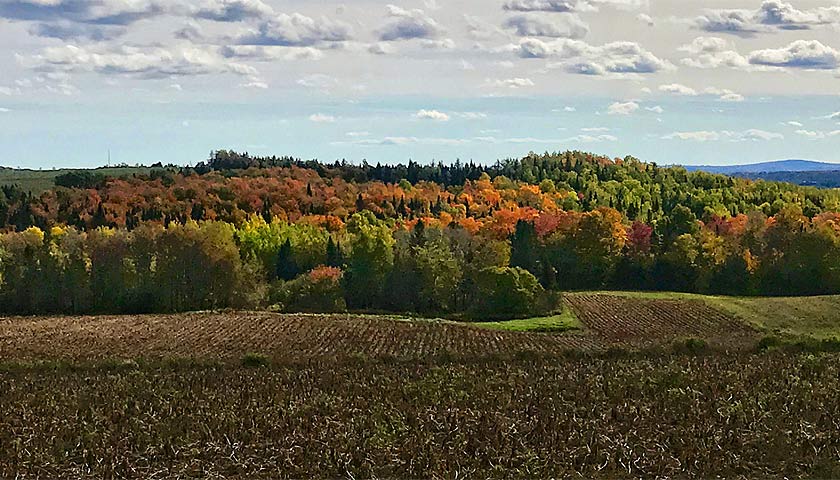
A Crisp Autumn Morning
Picture a crisp, autumn morning. The sun is starting to rise above the tree line that edges up close to the field that stretches before you. The air is still but sweet with the smell of season’s end. You step into the taller grass that grows just beyond the end of the field. The grass is wet with dew. In a heartbeat of time, all that has happened to get to this point passes before you.
Savage Farms Success Story
This is my livelihood, I don't know where I'd be if I didn't have this to tell you the truth. Being able to make a living at this, it's rewarding. We're growing over 500 acres of potatoes, so we have to perform and get a good yield to be able to make money, and every year that seems to get more and more challenging.
Strike + Potatoes Overview
No matter what you're growing, the health of the soil in which you're planting your crops has one of the most influential impacts on the quality of the crop you harvest. For years farmers have been using a variety of methods to increase yield and improve quality. A growing number of farmers have realized the health of their crop depends on the health of their soil.
Potato Expo 2020
Dr. Chad Hutchinson reviews how soil fumigation with Chloropicrin helps tackle potato scab, black dot, rhizoctonia, verticillium wilt, and nematodes while positively impacting overall soil health.?

Climate Change, Agriculture, and Chloropicrin Soil Treatment
Climate change is a politically divisive topic. It is advisable for those with a stake in agriculture to explore the ramifications of potential weather changes on business. As weather instabilities or weather extremes become more common, farming will need to change.
TriEst Ag Group Soil Health
A live-action video production for TriEst and included in our Q4 2018 Highlights portfolio. We're Levitate and we've been producing live and animated video for enterprise and SMB clients since 2009.







